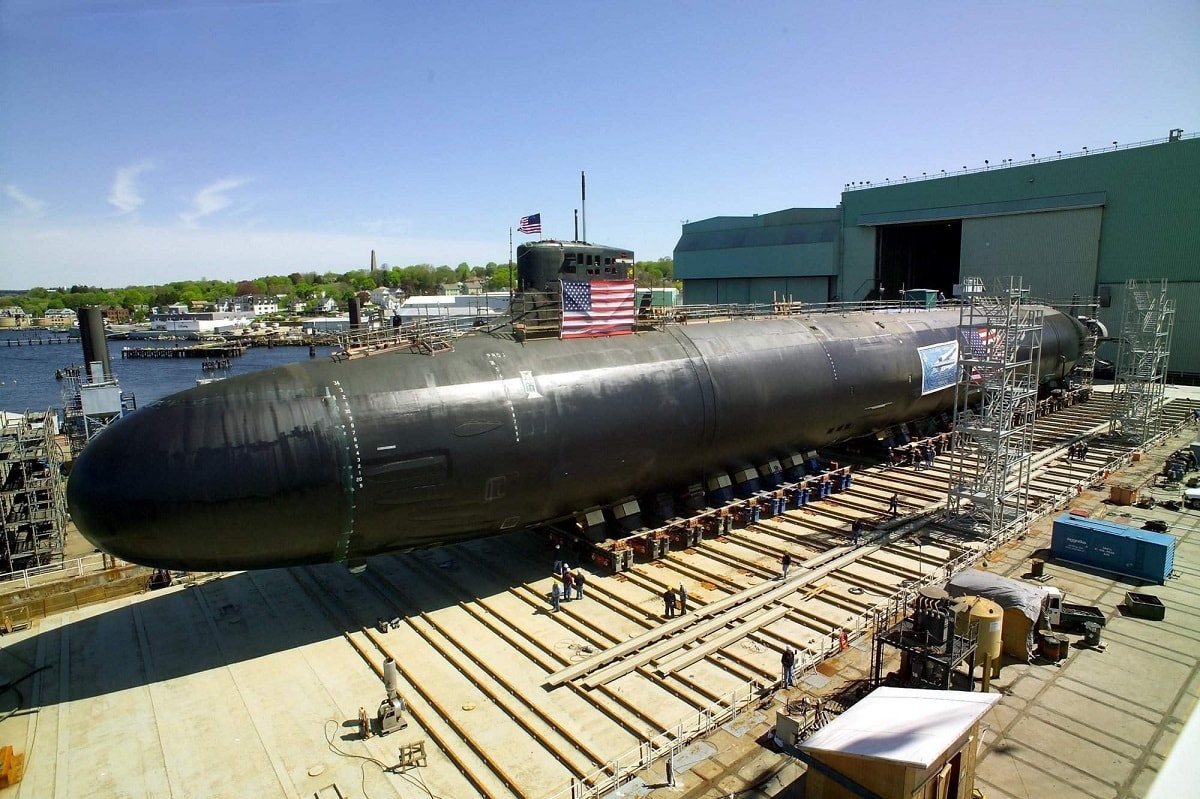New U.S. Navy budget documents recently made available found that the submarine that hit an uncharted undersea mountain was at one point scheduled for maintenance – a dry-docking period that could potentially have resulted in the sub avoiding the accident. Without the schedule change, it would have been secure at dry dock instead of smashing into the submerged mountain.
This situation has naval experts asking a serious question: does the US Navy have enough drydock and repair facilities in an era of great power competition?
How Will the USS Connecticut Be Fixed?
The USS Connecticut hit a seamount, or what some refer to as an underwater mountain, on October 2 resulting in injured sailors who were treated onboard.
The accident has the Navy examining what processes and procedures are in place to determine whether a submarine or ship goes to dry dock and whether there are enough dry dock facilities for naval vessels in the first place.
Chain of Command Gets Relieved
After the accident, the commander of the Connecticut, a Seawolf-class nuclear fast attack boat, was relieved, along with the executive officer and the senior enlisted sailor for loss of command confidence.
The Connecticut Was Supposed to Be in Port for Maintenance
The Connecticut was originally scheduled to attend Puget Sound Naval Shipyard for 21 months of drydocking and refit which would have restricted its availability until August 2022.
But the Navy changed its mind in 2020 and decided to postpone the scheduled maintenance. Instead, the Connecticut resumed patrolling that led to its mishap in the South China Sea. Now it appears the submarine will need at least two years of repairs if it is salvageable at all. A true shame considering Connecticut is only one of three unique and highly advanced Seawolf submarines, considered by many as one of the best submarine classes on the planet.
Guam Needs a Dry Dock
The Connecticut did go into dry dock during the summer of 2018 when the ship’s hull was inspected. Now the ship will again have to sail back to Washington state for repairs because Guam does not have a dry dock.
The Navy uses four public ship-yards and all ships have to rotate on a tight schedule for maintenance and refits. If there were a surge of damaged vessels, especially during wartime, there may not be enough room to service all the ships and submarines.
New Improvements to Shipyards Required
To correct this issue, the Navy devised a Shipyard Infrastructure Optimization Plan to address these problems such as building new dry docks at its four public shipyards (the navy uses private shipyards too).
An appropriation of $830 million in the FY 22 budget was set aside for the work.
These upgrades are imperative and necessary to keep the US Navy effective. The Navy hasn’t built new dry docks in 70 years.
But the saga of the Connecticut has laid bare a potential problem for the Navy in the Indo-Pacific and the East and the South China Sea.
If a U.S. warship is damaged, it might not be able to simply go to close by Guam for a dry dock – it could potentially only stay in Guam to assess damages until the vessel can steam to Puget Sound, Washington for further repairs.
China Is Watching Closely
This is a possible weakness that needs to be corrected, potentially by building a separate dry dock facility in Guam.
Surely the Chinese are watching this closely and wondering if the US Navy will address these weak points.
Also, the Navy must do a better job at determining which ships need maintenance and refit and which ships can prolong their activity at sea. Submarines have to compete with other ships for maintenance and this could create a problem for the future of undersea warfare.
1945’s new Defense and National Security Editor, Brent M. Eastwood, PhD, is the author of Humans, Machines, and Data: Future Trends in Warfare. He is an Emerging Threats expert and former U.S. Army Infantry officer.

